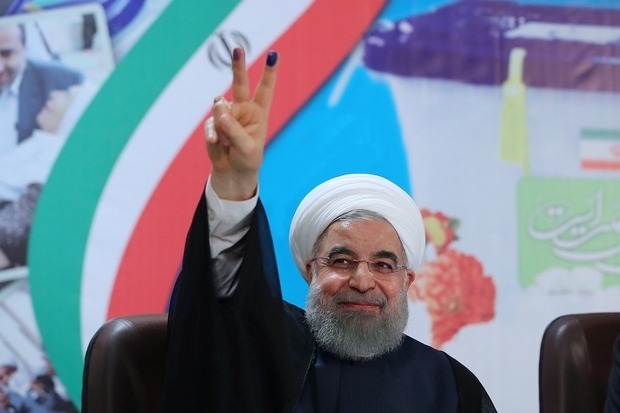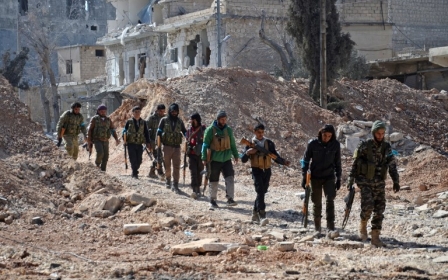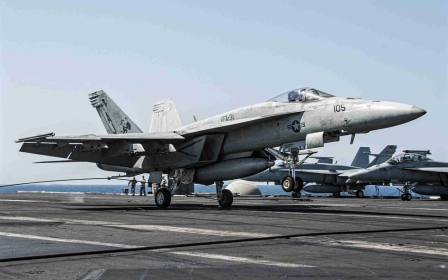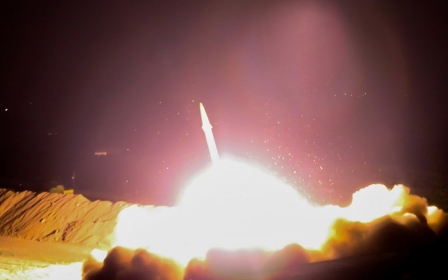Going ballistic: The defiant Iranian message in Deir Ezzor
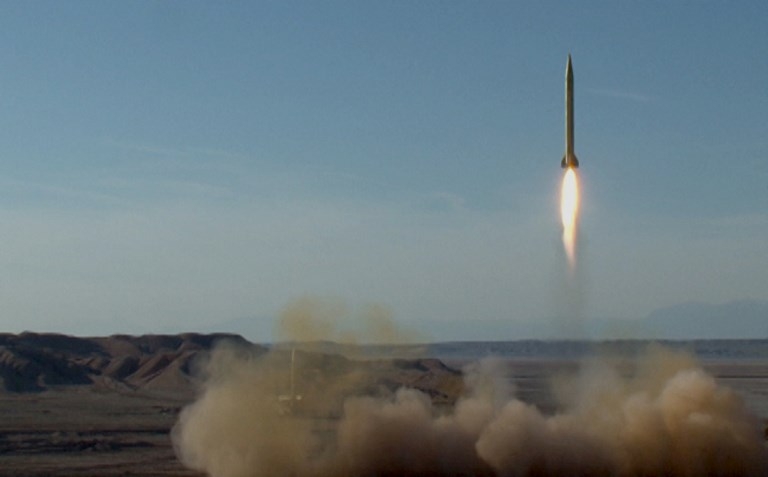
The Islamic State's twin terrorist attacks in Tehran earlier this month were always going to elicit a strong response from the Iranian national security establishment: they were an embarrassing security breach which proved costly to Iranian prestige.
It is against this backdrop that the rationale behind the missile strikes on Islamic State (IS) targets in Syria’s eastern Deir Ezzor province on 18 June becomes clear.
The political messaging of the strikes, intended for its American, Israeli and Saudi adversaries, is more important than the immediate operational impact on IS and its allies
Instead of going for relatively easy spots either inside the country or in neighbouring Iraq, the Islamic Revolutionary Guards Corps (IRGC) decided to utilise its most advanced capabilities – Zolfaghar mid-range ballistic missiles with an approximate range of 700 kilometres - against hard-to-reach IS targets.
In fact, the political messaging of the strikes, intended for its American, Israeli and Saudi adversaries, is more important than the immediate operational impact on IS and its allies.
The clearest message of all was for the US over the intensifying battle in Syria to determine the post-IS political and strategic landscape of eastern Syria.
The strikes have also inevitably become entangled in Iran’s domestic politics with factions on both sides of the political divide trying to create a split between the Rouhani administration and the IRGC.
Although this split is largely contrived – at least in national security terms – the IRGC is nevertheless signalling an end to a relatively conciliatory regional policy which has only emboldened Iran’s adversaries.
Deterrent capability
Contrary to some reports, the IRGC’s “Laylat al-Qadr” (Night of Power) operation in Deir Ezzor was not the first time Iran has used ballistic missiles since the end of the Iran-Iraq War in August 1988.
Short-range ballistic missiles were frequently fired at the bases in Iraq of Mojahedin-e-Khalq – a longstanding Iranian opposition group - notably in April 2001.
By striking IS targets in close proximity to US special forces, the IRGC is demonstrating that it has the ability to attack US military forces directly with mid-range ballistic missiles
But clearly, this is the first time that mid-range ballistic missiles have been used operationally. Their successful deployment speaks to sophisticated, integrated capabilities which allowed for the successful identification, surveillance and, ultimately, targeting of relatively hard-to-reach IS targets.
For example, the Ministry of Intelligence and Security reportedly collected detailed information on IS targets in Deir Ezzor which it then passed on to the IRGC for operational use.
The use of mid-range ballistic missiles was a demonstration of Iran’s strongest deterrent capability. To that end, the real recipient was not an ephemeral, non-state actor like the so-called IS group, but powerful and established adversaries. The IRGC was sending multiple political and strategic messages in the following order of importance:
1. Message to the US
First and foremost, the recipient was the US special forces based at al-Tanf in eastern Syria. This arena is increasingly contested as the US has tried to deny Iran free access from the Iraqi border (now controlled for the most part by pro-Iranian Iraqi Shia militias) to Syrian government-controlled territory in western Syria.
By striking IS targets in close proximity to US special forces, the IRGC is demonstrating that it has the ability to attack US military forces directly with mid-range ballistic missiles. It is also a demonstration of potential intent and underscores Iran’s resolve to protect vital national security interests in eastern Syria. The US has struck pro-Iranian forces on several occasions and the scene is set for further clashes.
2. Message to Israel
The strikes were also a demonstration of the reach and effect of Iranian ballistic missiles which could be fired at targets inside Israel in the event that the Israelis directly attacked Iranian targets.
More immediately, it was a message to dissuade Israel from escalating its military campaign against Lebanese Hezbollah inside Syrian territory. In view of recent escalation of Israeli air strikes in Syria, the demonstration in Deir Ezzor may prevent more serious military engagements.
3. Message to Saudi
For Saudi Arabia, the strikes are a demonstration of resolve and defiance in the face of repeated Saudi provocations and signs of potential hostile intent.
It is a clear message to the new Saudi leadership, in particular the young and inexperienced Crown Prince Mohammed bin Salman, that the IRGC has both the capability and resolve to rain down ballistic missiles on hundreds of high value targets inside the kingdom to devastating effect.
Message to Rouhani?
The decision to launch ballistic missiles against targets in eastern Syria was not taken lightly and almost certainly reflected institutional consensus in the Islamic Republic. Viewed against this backdrop, reports of splits between the Rouhani administration and the IRGC on this issue are not credible.
The Rouhani administration’s drive to contain tensions with regional and international foes like Saudi Arabia and the US has clearly failed, as evidenced by these powers’ increasingly harsh rhetoric on Iran
But as with almost every important event, the strikes have become ensnared in Iran’s notoriously fractious domestic politics. Some analysts have describing it as an assault on the Rouhani administration’s foreign policy which favours the projection of soft power to resolve regional and international issues.
It is worth noting that many powers, including France, Russia, UK and the US, have launched strikes against IS targets in Syria following terrorist attacks or to deter or disrupt such attacks.
However, the strikes can be viewed as signalling a shift in the direction of travel of Iranian regional and foreign policy. The Rouhani administration’s drive to contain tensions with regional and international foes like Saudi Arabia and the US has clearly failed, as evidenced by these powers’ increasingly harsh rhetoric on Iran.
They also signal a shift in Iran’s willingness to resort to the use of force and hard-power projection to achieve - or influence - a desired outcome towards actual or potential threats in the region.
- Mahan Abedin is an analyst of Iranian politics. He is the director of the research group Dysart Consulting.
The views expressed in this article belong to the author and do not necessarily reflect the editorial policy of Middle East Eye.
Photo: A handout picture released on 8 March 2016 by Sepah News, the online news site and public relations arm of Iran's Islamic Revolutionary Guard, shows a ballistic missile being launched during a test in an undisclosed location (AFP)
New MEE newsletter: Jerusalem Dispatch
Sign up to get the latest insights and analysis on Israel-Palestine, alongside Turkey Unpacked and other MEE newsletters
Middle East Eye delivers independent and unrivalled coverage and analysis of the Middle East, North Africa and beyond. To learn more about republishing this content and the associated fees, please fill out this form. More about MEE can be found here.



